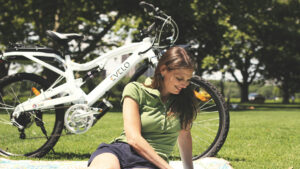As the chill of winter sets in, e-bike enthusiasts know that it’s time to prepare their electric bikes for the unique challenges of cold, wet, and icy weather. Proper winter e-bike maintenance not only ensures your bike performs well but also prolongs its lifespan, so you can enjoy a smooth ride all year round.
This guide provides essential tips and practices to keep your e-bike in prime condition through winter.
Whether you’re a daily commuter, an adventurous trail rider, or someone who just loves cruising around town, these maintenance tips and steps will help your e-bike stay reliable, safe, and ready for the road.
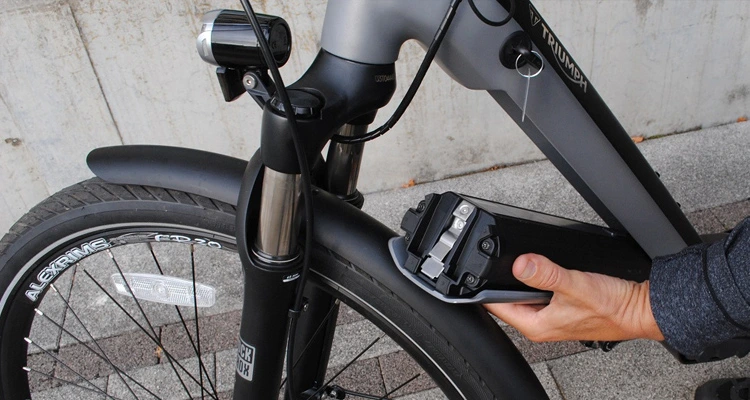
1. Battery Care: The Heart of Your E-Bike
Cold temperatures can reduce battery performance, impacting range and longevity. Lithium-ion batteries, which power most e-bikes, are especially sensitive to extreme cold.
Storage Tips:
- Bring the Battery Indoors: After each ride, remove the battery and store it indoors in a dry, room-temperature environment (above 50°F or 10°C).
- Avoid Leaving a Fully Drained Battery in the Cold: If the battery runs low, recharge it soon after. Batteries left uncharged in cold temperatures can degrade faster.
Charging Tips:
- Charge at Room Temperature: When charging, allow the battery to warm up to room temperature before plugging it in.
- Avoid Charging Below Freezing: Charging a frozen battery can damage its cells. If your battery is cold, let it warm up indoors before charging.
Example: Imagine a daily commuter who leaves their e-bike outside overnight. Bringing the battery inside each night can prevent power losses and extend battery life, ensuring it lasts through the cold season.
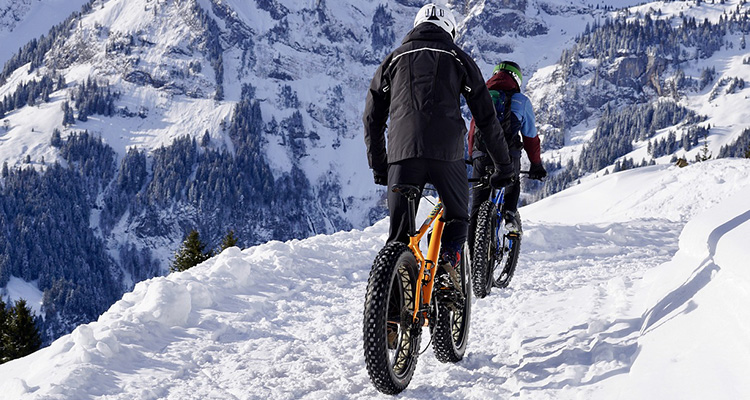
2. Protect the Electrical Components
E-bikes come with various electrical parts, such as displays, controllers, and wiring. Snow, ice, and salt can harm these components if not properly protected.
Protection Tips:
- Waterproof Covers: Invest in waterproof covers for the display and control systems, or use a high-quality rain cover for the whole bike when parking outside.
- Seal Vulnerable Areas: Apply dielectric grease to connectors to repel moisture and prevent corrosion. This is especially important for connectors exposed to the elements.
- Inspect Regularly: Look for wear on cables and connectors that could let water in.
Example: A mountain biker who often rides in snowy conditions might notice corrosion on the connectors by spring if they skip this maintenance. A small investment in dielectric grease and covers can keep their e-bike’s electrical system running smoothly.
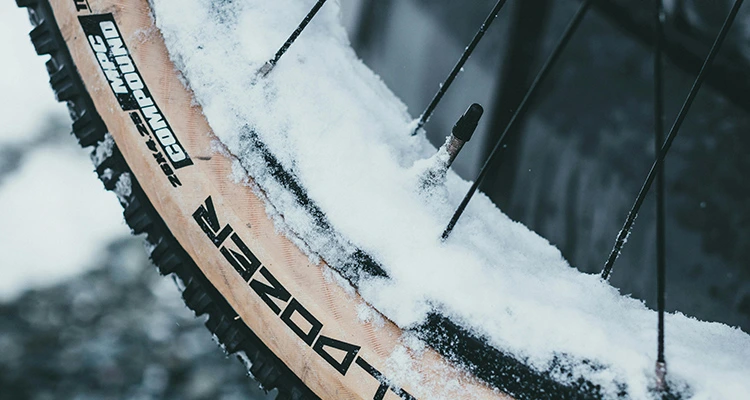
3. Tire Choice and Maintenance
Winter weather demands a change in tires for better traction on wet, icy, or snowy surfaces.
Tire Tips:
- Switch to Winter-Specific or Studded Tires: Winter tires have deeper treads for better grip on slippery surfaces. Studded tires add extra traction on ice and packed snow.
- Lower the Tire Pressure: Lowering the PSI (within recommended limits) increases the tire’s contact with the ground, improving grip in snowy and icy conditions.
- Regularly Check Tread Wear: Ensure your tires aren’t overly worn, as they’re the primary contact with potentially dangerous winter surfaces.
Example: A city commuter riding on a slippery road in January can avoid potential accidents by switching to studded tires and adjusting the tire pressure for maximum stability.
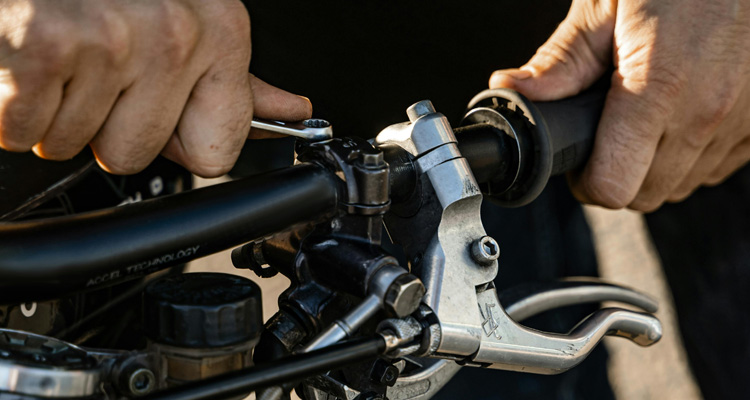
4. Lubrication: Keep Moving Parts Smooth
Winter conditions can wreak havoc on your e-bike’s chain and moving parts, as snow, ice, and road salt build up, causing corrosion.
Lubrication Tips:
- Use a Wet Lube: Wet lubes are more resilient against water and snow, making them ideal for winter. Apply it to the chain, derailleurs, and any other moving parts exposed to the elements.
- Wipe Off Excess Lubricant: After applying, wipe away the excess with a cloth to prevent dirt accumulation.
- Reapply Regularly: Given winter’s harsh conditions, you may need to reapply every couple of weeks, depending on how often you ride.
Example: A recreational rider who frequently rides on salted roads might notice a rusty chain if they only lubricate monthly. By switching to a wet lube and applying more often, they’ll maintain a quiet, smooth ride through winter.
6. Brake Check: Essential for Safety
Winter conditions can reduce braking efficiency, especially if you’re riding in wet or icy conditions.
Brake Maintenance Tips:
- Inspect Brake Pads and Rotors: Wet conditions wear brake pads down faster. Check the pads regularly and replace them if worn.
- Clean the Brake Components: Wipe down the rotors and calipers after each ride to remove any buildup.
- Consider Switching to Winter-Grade Brake Pads: These pads are designed to work better in cold, wet conditions, offering improved stopping power.
Example: A cyclist who frequently encounters wet conditions can benefit from winter-grade brake pads. This adjustment can reduce braking distances on slippery roads, providing additional safety.
7. Lights and Visibility
Winter days are shorter, and visibility can be compromised by snow, rain, and fog.
Lighting Tips:
- Upgrade to High-Lumen Lights: Choose a front light with at least 500 lumens to see clearly in low-light conditions.
- Use Rear Lights and Reflective Gear: Ensure your rear light is bright and visible, and add reflective tape or clothing for extra visibility.
- Keep Lights Clean and Charged: Snow and grime can cover lights quickly, so clean them after each ride, and make sure they are fully charged or replace batteries as needed.
Example: A rider navigating foggy or snowy mornings will stay visible to others on the road with high-lumen front and rear lights, improving their safety.
8. Winter Storage for Your E-Bike
If you don’t plan to ride your e-bike in winter, storing it correctly is crucial.
Storage Tips:
- Store in a Dry, Temperate Place: A garage or indoor space with minimal temperature fluctuations is ideal.
- Remove and Charge the Battery Every Few Weeks: This will maintain battery health over the winter.
- Clean and Lubricate Before Storing: Clean and lube all parts to prevent rust and ensure your bike is ready to go when spring arrives.
Example: An e-bike owner who only rides seasonally can ensure a smooth start in spring by following these storage practices, keeping their bike in optimal condition.
Final Thoughts
Winter e-bike maintenance doesn’t have to be daunting. By following these steps, you’ll extend the life of your e-bike, improve performance, and stay safe throughout the colder months. From taking care of the battery to choosing the right tires, each step plays a role in creating a hassle-free winter riding experience.
Now, whether you’re braving the snow-covered trails or navigating wet city streets, you can ride confidently, knowing your e-bike is winter-ready. Embrace the winter season and make the most of every ride!


